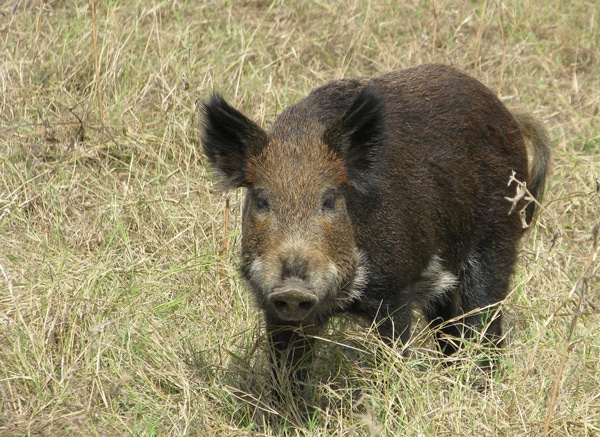
A team of experts has developed a new Texas AgriLife Extension Service publication focused on keeping feral hogs from raiding wildlife feeding stations.Publication focuses on feral hog exclusion from wildlife feeding stations.It provides advice and direction on how landowners can protect corn and protein pellets intended for wildlife from being eaten by feral hogs.
December 22, 2011

A team of experts has developed a new Texas AgriLife Extension Service publication focused on keeping feral hogs from raiding wildlife feeding stations.
The four-page publication, “Using Fences to Exclude Feral Hogs from Wildlife Stations,” was developed by Texas A&M University System and U.S. Department of Agriculture Animal and Plant Health Inspection Service wildlife experts. It provides advice and direction on how landowners can protect corn and protein pellets intended for wildlife from being eaten by feral hogs.
The new publication may be downloaded from the Texas AgriLife Bookstore website at http://agrilifebookstore.org or Plum Creek Watershed Partnership website at http://pcwp.tamu.edu/feral-hogs.
“We developed this resource primarily for residents of the Plum Creek watershed area, but it’s applicable to landowners throughout the state,” said Jared Timmons, an AgriLife Extension assistant who addresses feral hog issues in the Plum Creek watershed.
“In many parts of Texas, feral hogs damage landscapes, pollute the water, and hinder farming, ranching and wildlife management,” said Dr. Billy Higginbotham, AgriLife Extension wildlife and fisheries specialist. “Using fencing to exclude them from supplemental feed should be a part of every ranch-management plan.”
Significant damage
He added that feral hogs are responsible for more than $52 million in damage to the state’s agriculture industry each year.
“Feral hogs not only damage crops and other property in the Plum Creek Watershed and other areas of the state, but they also have been identified as a possible source of nonpoint pollution to the water table in many locations,” Higginbotham said.
Hunters and wildlife managers often provide feed for white-tailed deer and other wildlife in Texas, using an estimated 150,000 tons of corn each year.
“In addition to corn, many deer managers also supply high-protein pellet feed, but research has shown much of this supplemental feed is consumed by non-target species such as feral hogs,” Timmons said.
To meet management goals and reduce feed costs, Timmons said, deer managers should take steps to prevent feral hogs from accessing deer feed, and the new publication will provide “useful, practical information” toward reaching that end.
“Research conducted in South Texas brush country showed that fencing around feeding stations that excludes feral hogs is an effective way to keep them getting to and eating the corn and other supplemental feed landowners put out for wildlife,” Timmons said. “And while exclosure fences are time and labor intensive, they will pay for themselves in feed savings.”
Timmons said a result demonstration was conducted to determine appropriate fence heights of exclosure fences around wildlife feeding stations, and that the publication provides results of this study. The publication also has photos, a list of materials, fence height recommendation and cost estimates related to building an exclosure fence.
Other materials on feral hogs and feral hog management also may be found on the Texas AgriLife Bookstore or Plum Creek Watershed Partnership websites. The partnership website has 12 additional feral hog-related publications as well as voice-over presentations and a feral hog reporting website. On that site’s reporting portion, landowners may report feral hog activity, including removal, and non-landowners may report feral hog sightings.
Funding for the result demonstration was provided by the USDA Renewable Natural Resources Extension Act. Publication costs were funded through the Plum Creek Watershed Feral Hog Project with funding support from the U.S. Environmental Protection Agency through a Clean Water Act §319(h) Nonpoint Source grant administered by the Texas State Soil and Water Conservation Board and from the Cooperative State Research, Education, and Extension Service, USDA and National Integrated Water Quality Program.
You May Also Like



